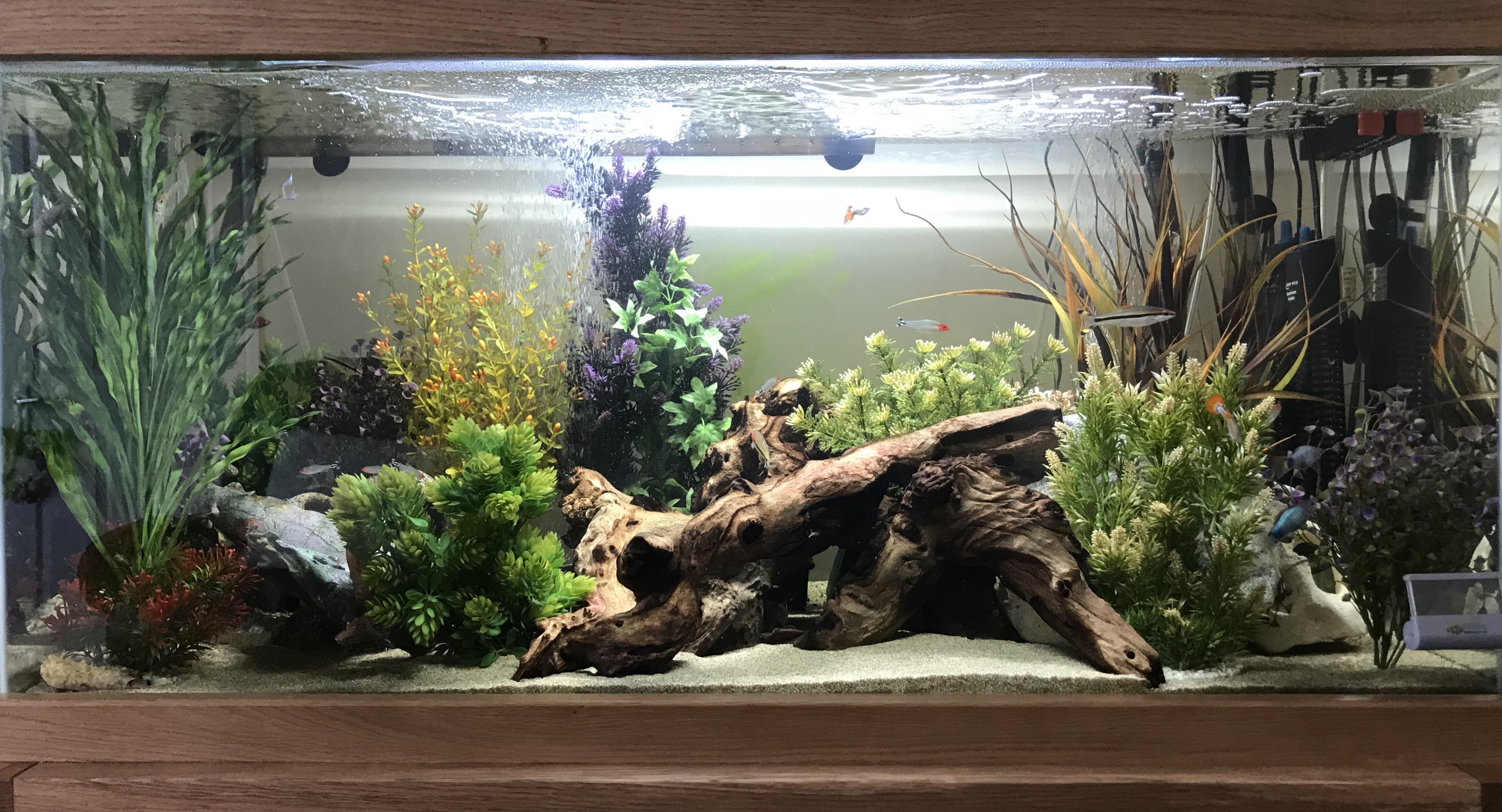Fish Health
Understanding how an aquarium and its filtration work to support aquatic life is fundamental in preventing disease outbreaks. The basics of aquatic life-support and water chemistry are the same whether you have a pond or aquarium. Along with a regular maintenance regime and meeting the specific requirements of individual fish species, getting these key elements right will go a long way in helping to prevent illnesses from occurring.
An overview of the nitrogen cycle and water quality can be found here. Ideally, pond/aquarium water will be tested on a regular basis, and this simple task (which takes no more than 5 minutes at most) will alert the fishkeeper to any potential problems arising with water quality, allowing for swift remedial action. Test kits may be purchased individually, or as a master test kit comprising several essential tests, which offer better value for money. Our aquarium test kits may be found here and our pond test kits here.
There are a multitude of maladies that can affect the health of your fish, the most common being bacterial or parasitic, with fungal infections often occurring secondarily to the initial disease.
Bacteria are present almost everywhere; some beneficial (such as the friendly bacteria in the aquarium filter which break down fish wastes), yet some are harmful and may cause serious illness. Whilst low levels of disease-causing bacteria are ever present in ponds and aquaria, the robust immune system of healthy, content fish will fight off any danger. It is when the immune system is compromised through stress or poor water quality, or if a fish picks up an injury, that problems can manifest. Likewise, introduction of an infected fish to the pond or aquarium can spread disease to the established livestock, and this is why quarantine aquariums can be so useful in safeguarding your precious pets.
Bacterial infections can be difficult to diagnose, as there are simply so many of them, most with overlapping symptoms. Some have more obvious indications than others, but in general several of the typical warning signs may include skin erosion/ulceration, red streaks/blotches, lethargy, hiding (when the fish doesn't normally do so), loss of colour, and clamped/frayed fins. There are a number of anti-bacterial treatments available for the pond or aquarium should a problem arise, but their use will only be effective if any environmental issues are addressed immediately too.
Parasitic diseases of fish, as the name suggests, are caused by various internal (endoparasites) or external (ectoparasites). They may include - but are not limited to - acanthocephalans, arthropods, crustaceans, nematodes, protozoans, and trematodes. Parasites in fish are a common natural occurrence and these irritants all possess a variety of specialised traits and life strategies that enable them to successfully colonise their hosts. Such problems are not restricted to wild-caught fish, as comparable issues can also arise on commercial fish farms. Fortunately, most parasitic infestations exhibit more obvious, specific symptoms and so are usually simpler to diagnose, helping us to select the best treatment options. Again, this is another prime example of why quarantine tanks can be so beneficial, particularly if the anti-parasite treatment contains copper - harmful to desirable invertebrates that may also be residing in the main aquarium.
A typical sign that a fish is infested with endoparasites would be severely wasting away despite being fed a regular nutritious diet, the belly taking on a hollow appearance. Ectoparasites come in so many different guises that we couldn't possibly list them all here, but symptoms can include white spots, an all-over dusting of smaller velvety spots, rubbing themselves against the decor, clamped fins, white slimy/stringy faeces, lethargy/swimming backwards, loss of appetite, and nodules or crustaceans attached to the skin. Stress is a precursor to a number of the parasitic illnesses, whitespot (or ' Ich') possibly the most commonly encountered, and it is imperative that any stresses are eliminated if the fish is to recover when medicated.
As mentioned above, fungal disease usually occurs as a secondary infection. When skin tissue is damaged and exposed (as a result of a bacterial infection, parasitic attack or injury), these open areas provide the perfect site for fungal spores to take hold. Commonly seen diseases such as fin-rot or mouth-rot are often assumed to be fungal, when their origin is in fact bacterial. If left untreated, secondary fungal infections then set in, with white or greyish fluffy, cotton wool-like growths the most obvious symptom.
To summarise: prevention is always better than cure - be sure to keep on top of water quality, test the water regularly, and never skip routine maintenance. Provide your fish with an environment that suits their needs and observe carefully to ensure none are being bullied or are under stress. Feed a nutritious varied diet, and consider setting up a quarantine tank for new purchases or emergencies.




